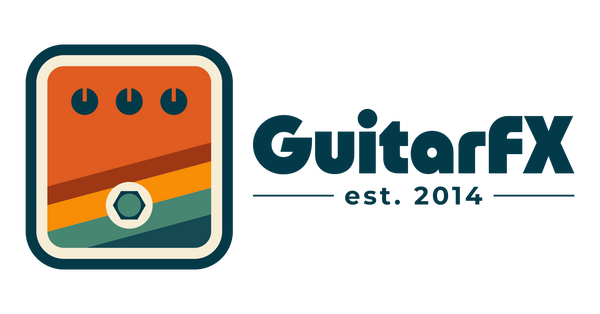What is a Reverb effect?
Share
Introduction
Reverb pedals, essential for adding depth and dimension to guitar sound, have become a staple in the guitarist's arsenal. This guide explores the history, types, and practical applications of reverb pedals, helping you to effectively use them to enhance your musical expression.
The History of Reverb Pedals
Reverb, originally created in physical spaces or using plate and spring units, was adapted into pedal form to provide guitarists with convenient access to various reverb sounds. Early reverb effects in popular music were achieved using large, mechanical reverb tanks, but advancements in technology led to the development of compact, versatile reverb pedals. These pedals have evolved from simple, one-dimensional effects to complex units capable of emulating various types of natural and artificial reverberation.
Understanding Reverb: From Subtle to Surreal
Reverb pedals work by simulating the natural echo that occurs in a physical space. The key parameters typically found in reverb pedals include:
- Decay: Controls the length of the reverb tail.
- Mix: Balances the dry (original) and wet (reverb) signals.
- Tone: Shapes the color of the reverb, affecting its brightness or darkness.
- Pre-Delay: Sets the time between the original dry signal and the onset of the reverb effect.
These controls allow for a range of reverb effects, from subtle room-like ambiance to expansive, hall-type reverberation.
Types of Reverb Pedals
Reverb pedals come in various styles, each offering unique characteristics:
- Spring Reverb: Emulates the sound of traditional spring reverb units found in vintage amplifiers.
- Plate Reverb: Simulates the sound of a metal plate vibrating, providing a smooth, lush reverb.
- Hall Reverb: Creates the impression of a large, open space, such as a concert hall, with a long decay.
- Room Reverb: Offers a more subtle and confined reverb, similar to that of a smaller room.
- Digital/Algorithmic Reverb: Uses digital processing to create a wide range of reverb types and experimental sounds.
Integrating a Reverb Pedal into Your Setup
Placement of a reverb pedal in the signal chain is crucial. Generally, reverb pedals are placed at the end of the chain, after distortion, modulation, and delay effects. This placement ensures that the reverb effect is applied to the already processed signal, creating a more natural and cohesive sound.
The Interplay with Different Amplifiers and Guitars
Reverb pedals interact with different amplifiers and guitars in unique ways. Tube amplifiers, with their natural warmth, can enhance the richness of the reverb. The type of guitar and pickups can also influence the reverb's character, with single-coils often yielding a clearer reverb sound compared to the denser reverb from humbuckers.
Iconic Reverb Pedals and Their Famous Users
- Dick Dale: Known for his use of the Fender reverb unit, which became integral to his surf guitar sound.
- The Edge (U2): Utilizes digital reverb units for creating the atmospheric soundscapes characteristic of U2's music.
- Daniel Lanois: A producer and guitarist noted for his use of reverb in creating ambient and ethereal textures in his music.
Advanced Techniques: Exploring the Depths of Reverb
Reverb pedals can be used creatively to shape your guitar's sound. Techniques such as setting a long pre-delay for a dramatic effect, combining reverb with modulation for lush soundscapes, or using dynamic reverb settings for ambient playing are explored.
Choosing the Right Reverb Pedal
Selecting the appropriate reverb pedal depends on your musical needs and preferences. Consider the type of reverb (spring, plate, hall, etc.), the versatility of the pedal, and its ability to blend naturally with your guitar's sound. The pedal's control layout and ease of use are also important factors.
Conclusion
Reverb pedals offer a way to add depth and space to your guitar sound, from subtle enhancements to transformative ambient effects. Understanding and utilizing these pedals can significantly expand your tonal palette.
FAQs
Q: How do I avoid a muddy tone when using a reverb pedal? A: To maintain clarity, use a moderate amount of reverb and adjust the mix control so the effect complements rather than overwhelms your dry signal. Experimenting with decay and tone settings can also help achieve a clearer reverb sound.
Q: Can reverb pedals be used in genres other than rock or ambient music? A: Absolutely. Reverb pedals are versatile and can be adapted to various genres, including jazz, blues, country, and pop, to add spatial depth and texture to the guitar tone.
Q: What's the difference between natural and artificial reverb in pedals? A: Natural reverb types, like spring and hall, aim to replicate the sound of actual physical spaces or mechanical reverb units. Artificial reverb includes digital and algorithmic types that create more experimental and unconventional reverb sounds.
